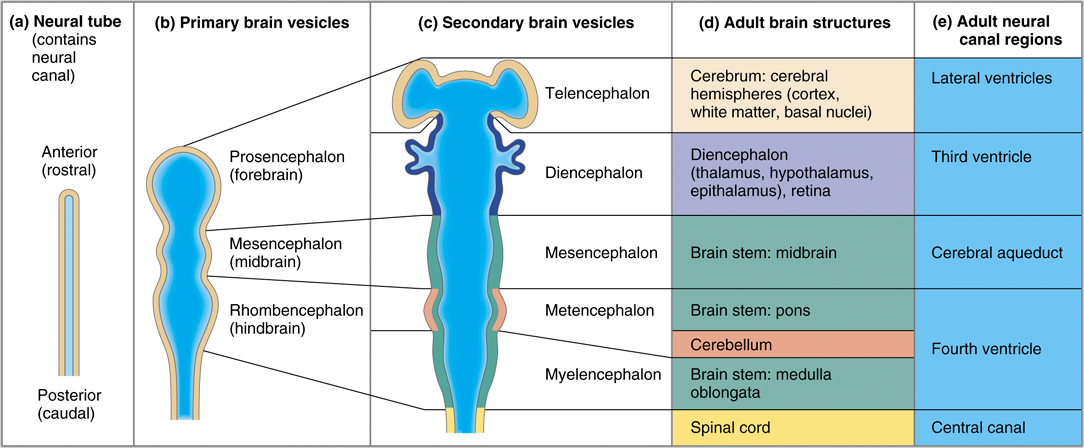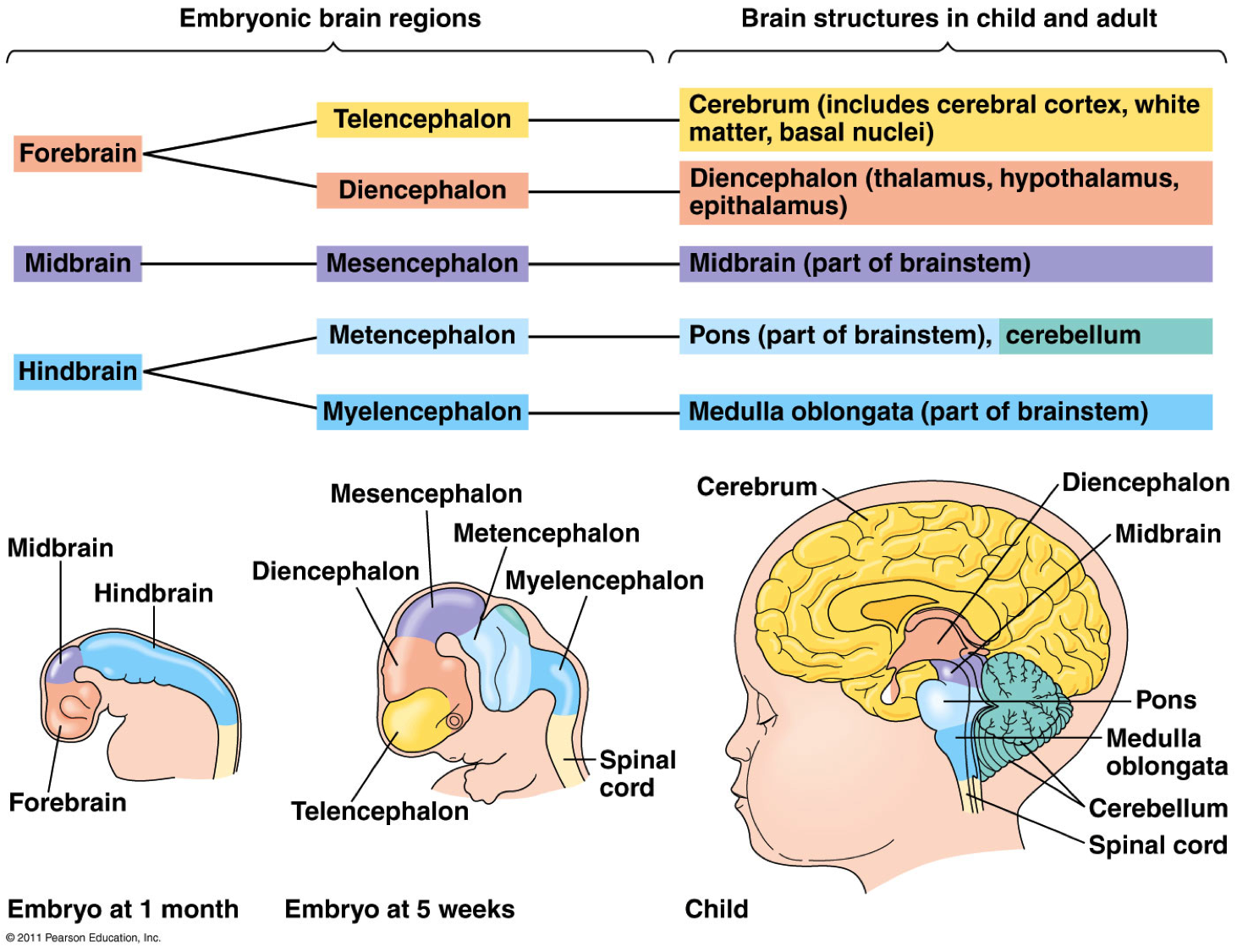Makindo Medical Notes"One small step for man, one large step for Makindo" |
|
|---|---|
| Download all this content in the Apps now Android App and Apple iPhone/Pad App | |
| MEDICAL DISCLAIMER: The contents are under continuing development and improvements and despite all efforts may contain errors of omission or fact. This is not to be used for the assessment, diagnosis, or management of patients. It should not be regarded as medical advice by healthcare workers or laypeople. It is for educational purposes only. Please adhere to your local protocols. Use the BNF for drug information. If you are unwell please seek urgent healthcare advice. If you do not accept this then please do not use the website. Makindo Ltd. |
Brain Embryology
-
| About | Anaesthetics and Critical Care | Anatomy | Biochemistry | Cardiology | Clinical Cases | CompSci | Crib | Dermatology | Differentials | Drugs | ENT | Electrocardiogram | Embryology | Emergency Medicine | Endocrinology | Ethics | Foundation Doctors | Gastroenterology | General Information | General Practice | Genetics | Geriatric Medicine | Guidelines | Haematology | Hepatology | Immunology | Infectious Diseases | Infographic | Investigations | Lists | Microbiology | Miscellaneous | Nephrology | Neuroanatomy | Neurology | Nutrition | OSCE | Obstetrics Gynaecology | Oncology | Ophthalmology | Oral Medicine and Dentistry | Paediatrics | Palliative | Pathology | Pharmacology | Physiology | Procedures | Psychiatry | Radiology | Respiratory | Resuscitation | Rheumatology | Statistics and Research | Stroke | Surgery | Toxicology | Trauma and Orthopaedics | Twitter | Urology
Related Subjects: |Cardiac Anatomy and Physiology |Coronary Artery Anatomy and Physiology |Cardiac Electrophysiology |Cardiac Embryology |Brain Embryology
Brain embryology refers to the process of development and formation of the brain during the early stages of human development. This complex process involves the differentiation and organization of neural structures from the neural tube, ultimately forming the mature brain.
Key Stages of Brain Development

- Neurulation :
- Occurs during the third week of gestation.
- Involves the formation of the neural plate, which folds to form the neural tube.
- The neural tube will give rise to the central nervous system (CNS).
- Primary Brain Vesicles :
- By the fourth week, the neural tube differentiates into three primary brain vesicles:
- Prosencephalon (Forebrain)
- Mesencephalon (Midbrain)
- Rhombencephalon (Hindbrain)
- By the fourth week, the neural tube differentiates into three primary brain vesicles:
- Secondary Brain Vesicles :
- By the fifth week, the primary brain vesicles further differentiate into five secondary brain vesicles:
- Prosencephalon :
- Telencephalon (gives rise to the cerebral hemispheres)
- Diencephalon (gives rise to the thalamus, hypothalamus, and epithalamus)
- Mesencephalon (remains the midbrain)
- Rhombencephalon :
- Metencephalon (gives rise to the pons and cerebellum)
- Myelencephalon (gives rise to the medulla oblongata)
- Prosencephalon :
- By the fifth week, the primary brain vesicles further differentiate into five secondary brain vesicles:
- Ventricular System Development :
- The lumen of the neural tube forms the ventricular system of the brain, which contains cerebrospinal fluid (CSF).
- The telencephalon forms the lateral ventricles, the diencephalon forms the third ventricle, the mesencephalon forms the cerebral aqueduct, and the rhombencephalon forms the fourth ventricle.
- Cortical Development :
- Neurogenesis begins around the fifth week and involves the proliferation of neural progenitor cells.
- Neuronal migration follows, where neurons move to their destined locations to form the cortical layers.
- Synaptogenesis and myelination continue postnatally, refining neural connections and improving signal transmission.
Formation of Major Brain Structures
- Cerebral Hemispheres :
- Develop from the telencephalon.
- Undergoes significant growth and folding to form gyri and sulci, increasing surface area for cognitive functions.
- Thalamus and Hypothalamus :
- Develop from the diencephalon.
- Thalamus acts as a relay station for sensory and motor signals.
- Hypothalamus regulates autonomic functions, emotions, and the endocrine system.
- Midbrain :
- Develops from the mesencephalon.
- Plays a role in vision, hearing, motor control, and alertness.
- Pons and Cerebellum :
- Develop from the metencephalon.
- Pons acts as a bridge between different parts of the nervous system and is involved in motor control and sensory analysis.
- Cerebellum is essential for motor coordination, balance, and posture.
- Medulla Oblongata :
- Develops from the myelencephalon.
- Controls vital autonomic functions such as heart rate, breathing, and blood pressure.

Clinical Relevance
- Neural Tube Defects :
- Failure of the neural tube to close properly can lead to defects such as spina bifida and anencephaly.
- Folic acid supplementation during pregnancy significantly reduces the risk of neural tube defects.
- Congenital Brain Malformations :
- Abnormalities in brain development can result in malformations such as holoprosencephaly, where the forebrain fails to properly divide into two hemispheres.
- Lissencephaly, characterized by a smooth brain surface due to abnormal neuronal migration.
- Hydrocephalus :
- Occurs when there is an imbalance between the production and absorption of CSF, leading to increased pressure within the ventricles.
- Can result from congenital malformations, infections, or tumours.
- Genetic Disorders :
- Genetic mutations can affect brain development, leading to conditions such as microcephaly (abnormally small head and brain) and macrocephaly (abnormally large head).
Summary
Brain embryology encompasses the complex processes that transform a simple neural tube into the intricate structures of the mature brain. Understanding the stages of brain development, the formation of major brain structures, and the potential for congenital abnormalities is crucial for advancing medical knowledge and improving prenatal care. Early diagnosis and intervention can significantly impact outcomes for individuals with congenital brain malformations.